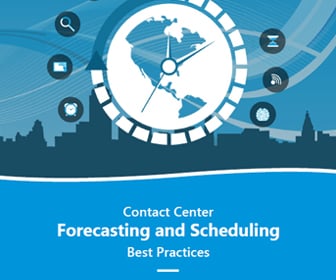Workforce Management Featured Article
Effective Quality Monitoring Depends on Training and Employee Expectations
Call center management, among its many other responsibilities, is tasked with monitoring operations and employees. This can manifest in activities such as listening to employee conversations as they work through issue with customers; it can also include keeping tabs on how business call recording and screen capturing software is working.
However it takes place, establishing goals for such processes and creating a plan for reaching those goals is paramount. This is the advice provided within a recent blog post at Call Center Quality Monitoring and Recording. Managers should know, through and through, the employees they work with and the software they all use to complete call center operations. The blog post suggests five tips for keeping things on the straight and narrow: Developing a strategy, using scorecards, completing team meetings, using automated tools, and developing a quality culture.
Managers are charged with defining what "quality" actually means for their organizations. Once they define the type of operation they want to conduct, they can make sure that definition is seen through by using scorecards to keep a record of how call center agents are performing. Managers can break down agent responsibilities into script reading, polite tone, taking initiative, and assisting other employees, likely among many other aspects of their jobs. A visual look at how they handle those responsibilities can provide employees with a great deal of insight into their own working lives.
Some elements of "quality" may not show up until employees weigh in. Managers can do their best to define what they want in their organizations, but if they give agents a chance to speak in team meetings, agents can often provide an insider's view into any problems they may have with business operations. Furthermore, these operations may include automated tools such as call recording software. Managers can use such software to play back calls to the employees who completed them, and from there they can explain their successes and failures. Team meetings may be a perfect place to play examples of good calls so all employees can witness, by example, what is expected of them.
Consistent feedback is important for continuous employee training. As tools such as those in unified communications systems become more widespread, employees will feel more pressure to learn a wider range of tools. Even though UC vendors attempt to make individual pieces of software consistent and interoperable, the learning curve can still be high for new and experienced employees. Call recording is one emerging aspect of employee training that can provide a personal touch, and it can help employees learn what a successful culture is all about.
If managers do their jobs correctly by properly defining "quality" and refining that definition with ongoing training, they can do their part toward creating a quality culture. As the Call Center Quality blog post points out, an overarching culture of success will allow agents to know more easily and more fully what is expected of them. This should come full circle when agents provide useful information in team meetings and further reinforce the culture. Without it, a disengaged population may remain quiet and detached from their own work, and that, in time, will only seek to harm the company.
Edited by Maurice Nagle







